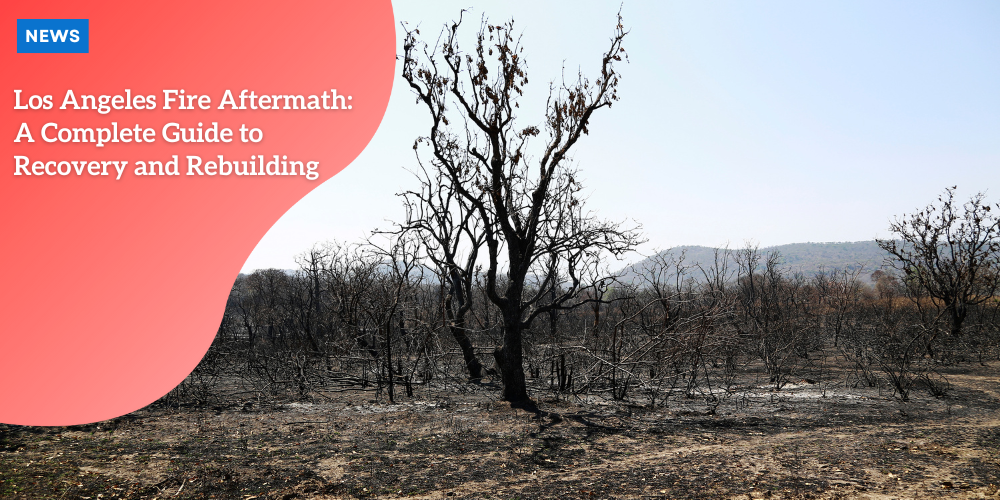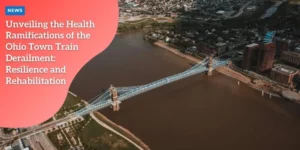Los Angeles Fire Aftermath: A Complete Guide to Recovery and Rebuilding

The Devastating Impact of the LA Fires
Overview of the January 2025 Palisades and Eaton Fires
The new year of 2025 started with unimaginable devastation for Los Angeles County.
Anúncios
On January 7, the Palisades and Eaton fires erupted, wreaking havoc across the region.
Fueled by a severe drought and intensified by fierce Santa Ana winds, these fires quickly spread, merging into an expansive juggernaut of destruction.
The two infernos collectively consumed over 37,000 acres of land before being contained on January 31.
Anúncios
In their wake, they left more than 16,000 structures destroyed and claimed the lives of at least 29 people—17 fatalities from the Eaton Fire and 12 from the Palisades Fire.
| 🎪 Stage | Featured Artists | Performance Style |
|---|---|---|
| 🎡 Coachella Stage | Missy Elliott, Marina | Powerful main stage acts with global acclaim |
| 🌇 Outdoor Theatre | The Marías, Tyla | Indie and R&B infused performances |
| 🎪 Gobi | Artemas, Ca7riel & Paco Amoroso | Eclectic fusion of sounds from emerging talents |
| 🚨 Sahara | Lisa, GloRilla | High-octane performances with dynamic energy |
| 🎧 Yuma | Vintage Culture | Deep house and immersive electronic sets |
Personal Stories of Loss
The Ubungen Family
The January 2025 Eaton Fire ripped through Marcus Ubungen and Ursula Tran’s lives, leaving their Altadena home in ruins.
The couple, along with their two young children, only managed to flee with the clothes on their backs, barely escaping the flames that claimed their home of four years.
Anúncios
For Marcus, a professional photographer, the loss wasn’t just a family home; it was the destruction of his entire livelihood.
Among the wreckage were all of Marcus’s photography gear, a decade’s worth of photos stored on hard drives, his entire film negative archive, and footage from a documentary five years in the making.
Marcus shared, “I don’t think it fully has hit my body yet — like I don’t think my body has fully digested what has happened with that, because we’ve been trying to find housing and get my photo gear” ABC News.
The sight of two roses blooming amidst the ashes offered a glimpse of resilience and hope amidst the devastation.
Katia and Adam Hausman’s Journey
Katia and Adam Hausman’s journey post-fire has been notably somber.
They returned to their once-vibrant Pacific Palisades home, now reduced to ashes, searching for anything salvageable.
Amidst the rubble, their daughter’s water bottle was a haunting reminder of the life they had.
“We saw our daughter’s water bottle, and we recognized it, and that’s kind of like a glimpse of our lives that we had,” Katia said ABC News.
For Katia, sifting through the remains had its own sense of closure despite the heartache, prompting her to take one small saucepan as a token of the life they were leaving behind.
Living nearby the daughter’s school is imperative for the Hausmans. Unfortunately, this limitation has them exploring options out of California as they struggle with financial strains.
Their insurance payout made temporary lodging possible, but it couldn’t cover all the mounting costs ABC News.
Dale Fielder’s Loss
Dale and Patricia Fielder, long-time Altadena residents, lost their cherished home along with Dale’s invaluable musical instruments and original compositions to the Eaton Fire.
Dale recalled the disbelief he felt when he first saw the smoldering remains.
“I get to my block…not a single house was standing. And finally I pull up in front of my house, and just — it was gone” ABC News.
The heartache of losing thousands of pages of original sheet music and custom instruments was profound.
Despite such losses, Dale found solace in his music, channeling the pain into creativity.
Recording a new album, Dale used it as a therapeutic outlet, featuring cover art of him playing a saxophone among the ruins.
“This is a time of great testing. And who knows, but it’s a time of really learning how to reinvent yourself,” he remarked ABC News.
These stories of loss are only a fragment of the larger picture as families and individuals navigate the challenging road to emotional recovery and rebuilding their lives.
Emotional and Psychological Impact
The Stages of Grief and Shock Experienced by Survivors
The emotional aftermath of the Palisades and Eaton fires has left countless individuals in varying states of grief and shock.
Initially, those affected by the devastating fires experienced profound numbness and disbelief.
As Katia Hausman described her own experience, “It’s a process where you’re numb and shocked. In the first week, you can’t even do anything.”
This initial shock gradually gives way to a host of powerful emotions, including sadness, anger, and anxiety, as individuals begin to process the magnitude of their loss.
Marcus Ubungen and Ursula Tran faced the heart-wrenching reality of explaining the destruction to their young children.
“Days out from the fire looks very different than a month out,” said Ursula, pointing to the complexity and ever-evolving nature of their emotional recovery.
For many, the mere sight of their ruined homes triggered waves of sorrow, compounded by the realization that their sense of security had been irrevocably altered.
Fabiola Sammartino’s Struggle with Trauma and Mental Health Challenges
Among the survivors, Fabiola Sammartino’s journey stands out as a poignant example of the long-lasting mental health impact of the fires.
Having lost her Pacific Palisades apartment, Fabiola has been grappling with significant trauma.
“My memory retention is basically zero,” she confessed. “I forget things, and very easily I lose things.”
Her inability to focus, a stark contrast to her usually concentrated nature as a paralegal, underscores the profound psychological toll of the disaster.
Fabiola’s struggle with mental health challenges has led her to seek therapy.
She recounts the emotional difficulty of adjusting to a new living environment, one that doesn’t hold the same comfort and familiarity as her previous home.
“Starting from scratch… it may sound exciting… but I was forced to move. And it’s very, very painful every day,” she shared, highlighting the involuntary nature of her displacement and the ongoing grief ABC News.

The Emotional Toll of Losing Personal Memories and Possessions
The physical loss of property is compounded by the emotional devastation of losing personal memories and possessions.
For Katia and Adam Hausman, sifting through the ashes of their Pacific Palisades residence was a bittersweet endeavor.
They found small items like their daughter’s water bottle and a saucepan, which brought back memories of their pre-fire lives.
Katia reflected on the pain and closure associated with these finds, as she sought to reconcile the past with an uncertain future ABC News.
For Fabiola Sammartino, revisiting the charred remains of her apartment was a deeply emotional experience.
“Going back to my neighborhood for the first time… was painful,” she admitted.
The experience left her grappling with the reality of never returning to the streets she once called home.
Despite finding a new place in Brentwood, she remains haunted by memories of her former residence, highlighting the enduring emotional impact of her loss.
As survivors navigate the aftermath of the fires, the psychological and emotional challenges they face are profound.
These difficulties underscore the importance of community and professional support in helping individuals heal and move forward.
Rebuilding not only structures but also lives is a complex process, requiring both resilience and hope.
Housing and Relocation Challenges
After the devastation of the Palisades and Eaton fires, many Los Angeles residents found themselves facing significant housing and relocation challenges.
The fires destroyed over 16,000 structures, displacing thousands of families and creating a severe shortage of available housing.
Temporary Housing Dilemmas
Finding temporary housing while maintaining proximity to schools and work has proven to be a monumental challenge.
Many families had to balance the need to stay close to their jobs and children’s schools with the scarcity of available rentals.
Marcus Ubungen and Ursula Tran, for instance, struggled to secure a temporary residence in their neighborhood, forcing them to consider other areas, which inevitably led to longer commutes and disrupted daily routines.
Financial Strain
The financial burden of maintaining mortgages on destroyed homes while paying for temporary accommodations has put immense pressure on affected families.
Katia and Adam Hausman faced the difficult reality of continuing to pay their mortgage for a home that no longer existed, on top of the costs for their temporary housing arrangements.
This dual financial obligation strained their resources, making the path to recovery all the more arduous.
Potential Relocation
For some, the financial strain and housing scarcity have made it nearly impossible to stay in Los Angeles.
The potential necessity of relocating outside of California has become a consideration for many.
Dale Fielder expressed uncertainty about whether to stay in Los Angeles or to move to Texas to be closer to family.
This difficult decision reflects a broader trend among families who have been forced to weigh the costs of rebuilding against the potential benefits of starting anew in a more affordable location.
The challenges of finding suitable temporary housing, managing the financial strain of double housing expenses, and considering relocation have compounded the emotional and psychological impact already experienced by these families.
The journey to recovering their lives requires navigating these significant hurdles while holding on to hope for the future.
This path forward also involves dealing with complex administrative processes and insurance claims, which we will explore next.
Administrative and Insurance Hurdles
Navigating the maze of insurance claims and administrative paperwork can be overwhelming for anyone, let alone fire survivors grappling with immense loss.
Imagine losing your home and every possession you own, only to be confronted with stacks of forms and complex procedures.
This is the reality many faced after the devastating Los Angeles fires.
Navigating Complex Insurance Claims
For families like the Ubungens and the Hausmans, the immediate aftermath involved countless discussions with insurance adjusters.
The Ubungens, having lost their Altadena home, needed to itemize their entire household’s worth and substantiate the value of each item destroyed.
The process was not only meticulous but also deeply emotional, as they recounted every personal belonging reduced to ashes.
Katia and Adam Hausman faced similar challenges.
Their Pacific Palisades home was engulfed in the fires, and sorting through red tape turned out to be an exhausting ordeal.
“Filling out the paperwork for every single item lost felt like reopening a wound repeatedly,” shared Katia.
“And when they would ask for further proof, it sometimes felt impossible to provide.”
Challenges with FEMA Assistance
Federal Emergency Management Agency (FEMA) assistance, designed to aid in such situations, presented its own hurdles.
The Hausman family, for instance, found that FEMA lodging reimbursements were not as straightforward as hoped.
Since the available hotels were significantly distant from their daughter’s school, the reimbursement option was rendered useless for them.
The Ubungens, on the other hand, battled with understanding what they were eligible for after losing their home.
The process required them to be persistent, patient, and almost relentless in chasing after every claim and requisite form, which added another layer of stress.
Unexpected Administrative Burden
The administrative burden in the wake of a disaster can’t be underestimated.
“I didn’t anticipate the amount of life admin work that would come with a disaster,” Marcus Ubungen noted.
Dealing with the trauma while managing vast administrative tasks felt overwhelming.
From filling out insurance claim forms to seeking rental assistance and understanding the fine print of their coverage, every step required time and emotional energy that many didn’t have in surplus.
This staggering administrative load also hindered their recovery process.
Survivors constantly balanced paperwork with rebuilding efforts, each task nudging them to relive their catastrophic loss.
The complexity and demands of these administrative challenges sometimes delayed their ability to start reconstructing their homes and lives.
These sobering stories illustrate the essential, yet often overlooked, administrative struggles faced by disaster survivors.
Overcoming these hurdles requires immense patience and resilience.
Amidst these administrative struggles, glimmers of hope and support began shining through, offering a reminder of community strength and resilience in the face of overwhelming adversity.
Finding Hope and Moving Forward
The aftermath of the Palisades and Eaton fires left many Los Angeles residents grappling with the loss of their homes and possessions.
However, amid the devastation, stories of resilience and community support have emerged as beacons of hope.
Stories of Resilience
Despite the overwhelming loss, many survivors have found ways to forge ahead and rebuild their lives.
Marcus Ubungen and Ursula Tran discovered a symbol of resilience in their garden—two tiny roses that survived the fire.
“Amidst this destruction, there is still something that is resilient,” Tran reflected.
This small yet significant discovery gave them hope and strength to move forward.
Katia and Adam Hausman have also shown remarkable resilience.
After searching through the ashes of their Pacific Palisades home, they found items that brought back memories, like their daughter’s water bottle and a small saucepan.
These moments of connection with their past helped them transition to the next stage of their lives.
Dale Fielder used his music to cope with the loss of his home and valuable musical compositions.
He channeled his emotions into creating new music, which he described as a transformative experience that helped him heal.
Community Support
The support from the community has also been a crucial factor in the recovery process.
The Hausmans received temporary housing support from a family at their daughter’s school.
This assistance allowed them to remain close to their daughter’s school, which was essential for maintaining a sense of normalcy.
Dale Fielder and his wife received financial support from friends through a GoFundMe campaign.
This generosity enabled them to get back on their feet and focus on rebuilding their lives.
Symbols of Hope
Incredible symbols of hope have emerged from the ashes.
For Marcus Ubungen and Ursula Tran, the surviving roses in their garden became a powerful reminder that life can endure even the most devastating circumstances.
Rebuilding Lives
The journey to rebuild is not without challenges, but survivors are finding ways to adapt and move forward.
Dale Fielder’s creative process of recording a new CD helped him find a sense of purpose and direction amid the chaos.
Katia Hausman, despite her initial reluctance to revisit the remains of her home, found closure and a path forward by cherishing the salvageable pieces of her past.
Together, the resilience of the survivors and the strong sense of community support offer a hopeful path forward.
Through these experiences, they are finding new beginnings and redefining their lives amid the recovery process.





